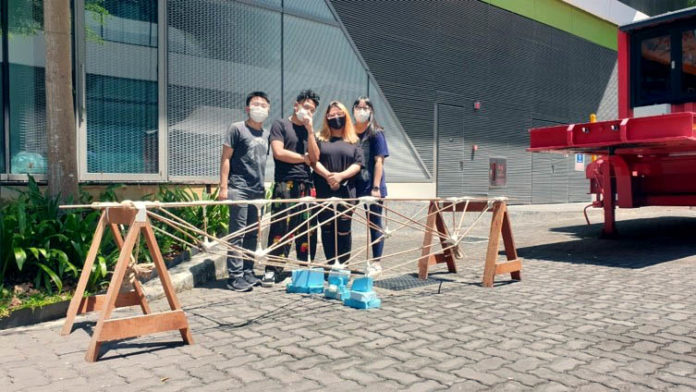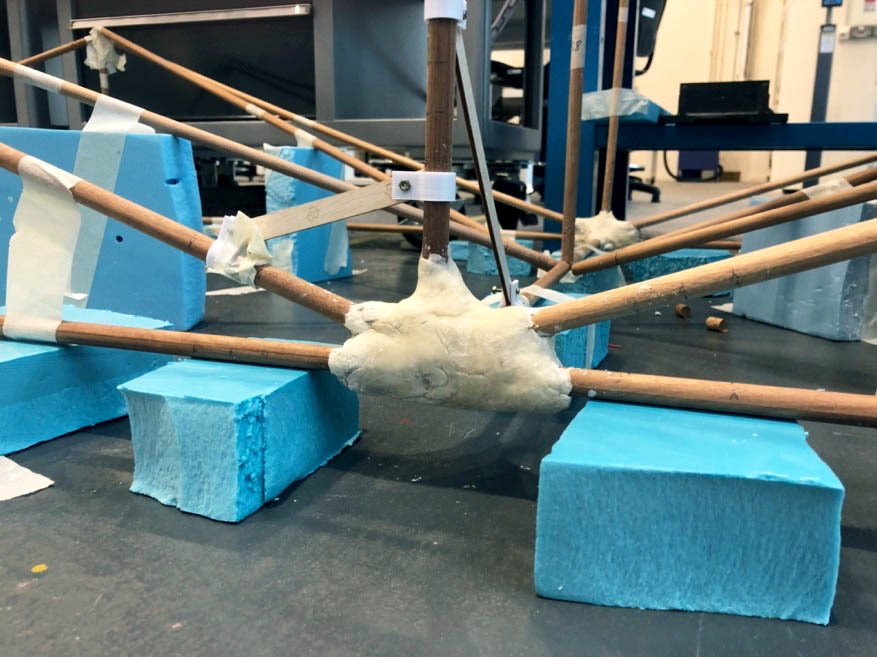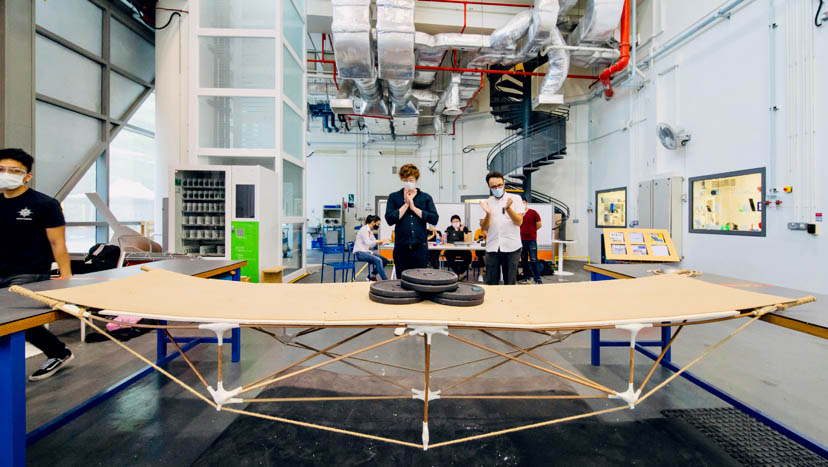We get the inside scoop from seniors on the best modules to take and how to ace them!
If you’re a prospective student researching on universities, you’re probably wondering which courses are the most interesting and relevant.
While other universities focus on “GPA boosters”, at SUTD, we focus on “portfolio boosters”. Many of our courses are carefully designed with a maker-based element where students prototype and create a tangible output at the end of the semester. This hands-on experience has been crucial in helping our students clinch competitive internships and even permanent jobs.
Out of the hundred-plus courses that we have, we got our seniors to highlight the modules that aren’t just exciting, but also guaranteed to boost your portfolio:
Architecture and Sustainable Design (ASD)
SUTD senior Sharmayne Lim recommends: Architectural Structure & Enclosure Design, and Digital Design and Fabrication
What it is:
“In Architectural Structure & Enclosure Design, you’ll pick up practical concepts and knowledge about building structure and physics, plus learn computational software like Karamba3D to help analyse structures that you design and model out.
In Digital Design and Fabrication (DDF), you’ll generate designs by writing basic scripts in Python with the Fusion 360 API, and learn advanced methods of production like CNC routing and Waterjet cutting.
One of the assignment deliverables for DDF was to design a three-dimensional joint for a grid-shell structure and fabricate it using water-jet technology. We experimented with geometric modelling and worked with metal, which – unlike paper and wood – forced us to design more carefully in advance before fabrication, as it was less malleable.
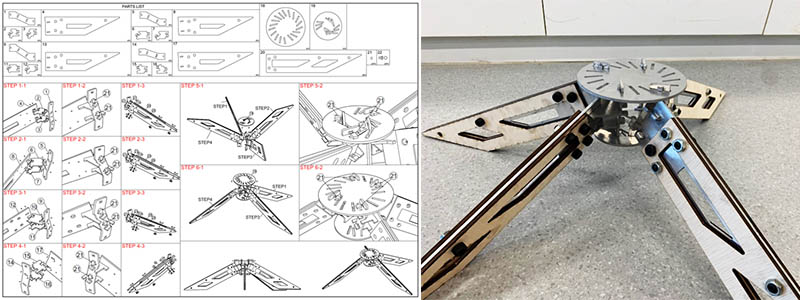 The DDF assignment deliverable
The DDF assignment deliverable
Finally, you’ll design, fabricate and build a 3-metre bridge using what you’ve learned from both these modules!”
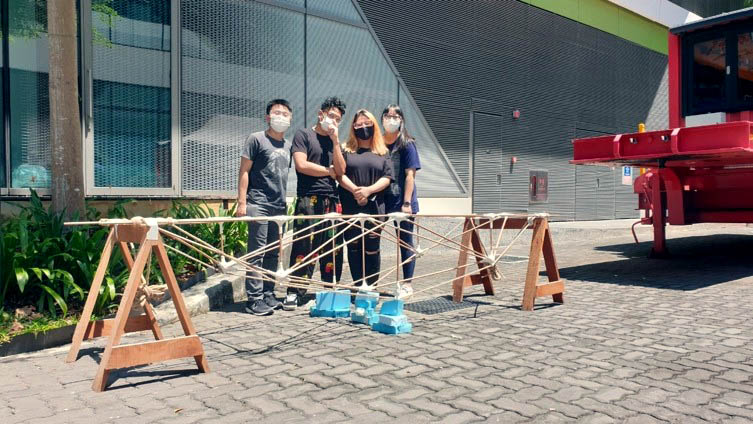 Sharmayne (rightmost) with her team and project prototype
Sharmayne (rightmost) with her team and project prototype
Best part:
“These modules are very hands-on, and exposed us to many different fabrication methods. We got to play with different software and many types of materials (e.g. wood, bristol board/greyboard) during class! Being able to create tangible products and models that can actually work is a great feeling. The professors for these two modules are also really nice – they went the extra mile to help us source for FLAM (fungal like adhesive material) and computer fans to assist us when we were constructing our bridge, and regularly checked in with us to offer advice, help and feedback during the fabrication process.
Skills acquired:
“Digital design skills, including Fusion 360 and Python to generate parametric designs or optimise fabrication processes; Karamba3D to analyse structural integrity and forces; and Rhino and Grasshopper for general design. Also, physical production skills, including many new methods of fabrication, like CNC routing and Waterjet cutting, on top of the usual methods of production, like laser cutting and 3D printing.”
My experience:
“To build the 3-metre bridge for our key project, my team was the only one that decided to take a risk by using FLAM. We had no idea if it could work (FLAM looks and feels like mashed potato and only hardens after a long time), but put in 100% commitment to experimenting with it (we tried drying it with hairdryers, computer fans, heat guns, and eventually just the sun!). After countless intense 16-hour days in the lab, and amazing teamwork, our bridge managed to support 60kg – 10kg over the requirement!”
Portfolio boost:
“Apart from the hands-on technical skills and projects you can add to your portfolio, this module really hones your soft skills. You’ll learn to work effectively with different people, and become a better team player. Plus, you’ll develop communication skills and the ability to work well under pressure.”
How to ace it:
“Be engaged during class time, and don’t be shy to ask the professors and TAs anything you need to in order to clarify your doubts!”
Final verdict:
“These modules are for you if you’re interested in anything hands-on and eager for challenges. It’ll be a wild ride, with many software/concepts/production methods to learn, and sleepless nights designing/writing code/reports, but you’ll emerge immensely fulfilled and proud of yourself and your creations!”
Bonus Freshmore module recommendation: Introduction to Design*
“The most impactful module in hindsight. It was really eye-opening, and taught us many applicable and useful concepts and processes. For example, user personas; their needs, likes and pain points, user interviews and journeys – basically the entire design process, which is actually really relevant and useful when designing solutions to address problems.”
Engineering Product Development (EPD)
SUTD senior Chan Yan Zhi recommends: Engineering Design Innovation
What it is:
“A project-based module where you work in groups of 5-6 to solve an engineering problem. Your group first identifies a problem related to a theme provided by the professors, then works through the design process to create a working prototype that directly solves the problem.
Other modules can be quite technical, but this one gives a broader perspective of what working on an engineering problem is like, and requires you to combine your prior knowledge to create a well-rounded product. For instance, there were many sub-components in the project that I worked on – electrical, mechanical and even a psychological component – all of which were crucial to creating a good prototype.”
Best part:
“Lots of room for innovation and creativity! There are many ways to solve an engineering problem and it’s completely up to the group to decide on the best approach. You’ll also get a glimpse into what working in the industry will be like – combining technical knowledge and skills with project management ability.”
Skills acquired:
“Most importantly, you’ll pick up project management skills, such as keeping track of group long-term goals, and ensuring budgeting and time management are well thought-through.”
My experience:
“My group realised that work-from-home (WFH) culture makes it difficult for people to separate their work and personal lives (students too!), so we came up with a prototype for a table with multiple surfaces and a smart mood lighting system. This lets users transition seamlessly between a WFH environment and one which feels more like home.”
 Yan Zhi (rightmost) with his team and project prototype
Yan Zhi (rightmost) with his team and project prototype
Portfolio boost:
“Getting to use my technical knowledge in a project, including coordinating with teammates, project management and budget management, is an experience that’ll be useful in my summer internship and in future jobs.”
How to ace it:
“Maintain proper communication with teammates and ensure everyone is on the same page. Also, choose a topic that all members are passionate about – this keeps everyone going when the going is tough!”
Final verdict:
“This is a compulsory module for EPD students, but with good reason – it was tough but so fulfilling. Creating a working prototype at the end of the project after numerous sleepless nights, which fulfils the aims we set out to achieve, was an extremely sweet moment.”
Bonus Freshmore module recommendation: The Digital World*
“This module provides beginners like me with a good foundation in coding and coding logic. It also enabled us to apply basic concepts to solve real-life problems, which I found very useful.”
These courses simulate an immersive learning environment with real-world opportunities that result in amazing working prototypes. Design-and-maker-based learning ultimately underpins every aspect of SUTD’s curriculum.
In an evolving world that increasingly prioritises innovation, we recommend choosing a university where courses are designed to boost your portfolio and equip you with hands-on skills. Don’t forget to look out for Part II of this feature for more great module recommendations from our seniors!
Develop your maker mindset and build a portfolio of exciting prototypes by pursuing a design-centred, interdisciplinary education at SUTD.
*All students go through a common curriculum for their first 3 Terms (Freshmore).
 Like what you just read?
Like what you just read?
To experience more SUTD innovations Designed for People x Powered by Tech like OSCAR, visit our Open House on 18 and 19 Feb, and visit our website https://openhouse.sutd.edu.sg/.
#whySUTD? We’re glad you asked – here’s why!
It can be hard to ask the right questions that will help you to decide which university to join, so we’ve compiled a list of FAQs for you here.




















